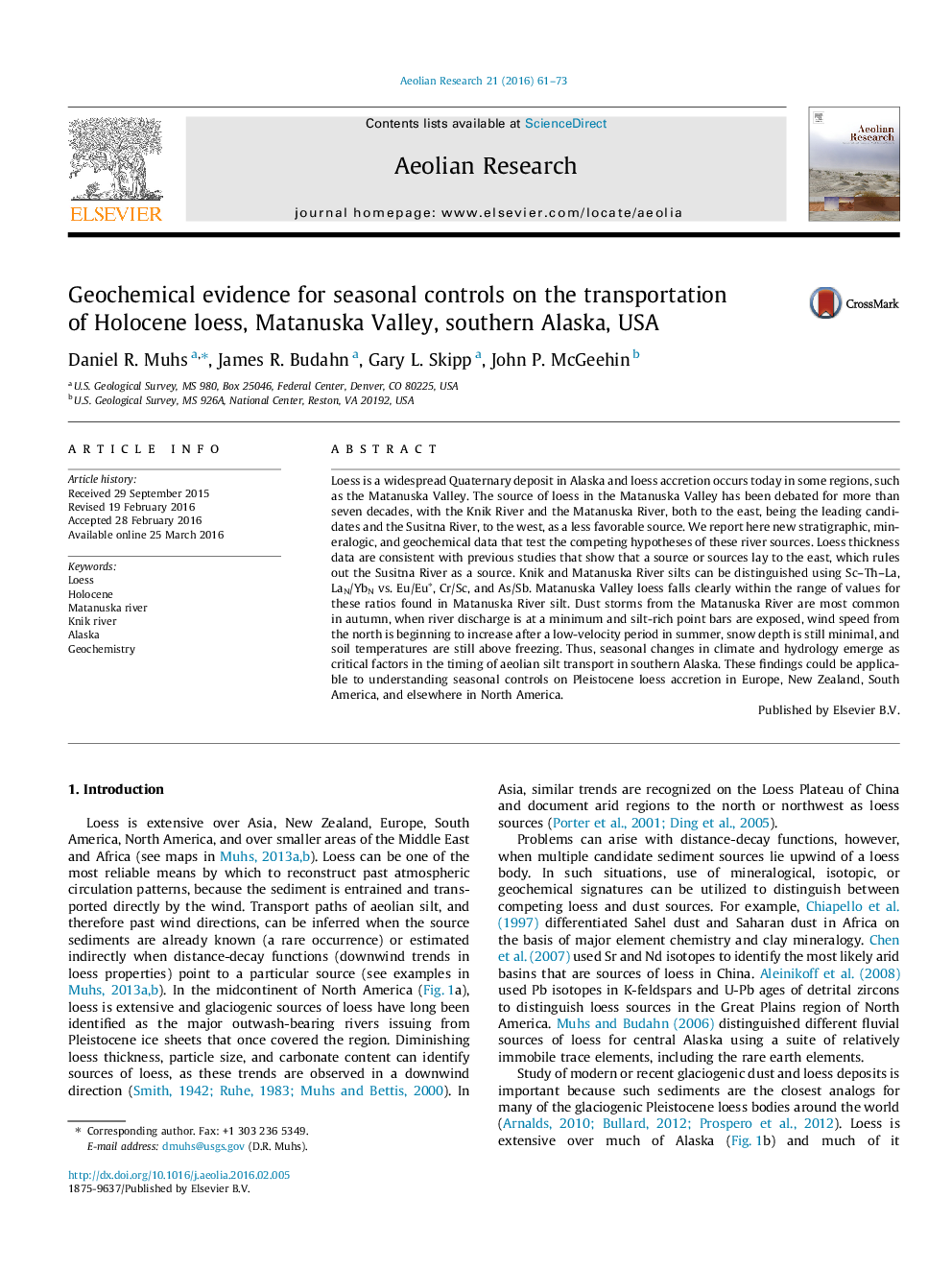| کد مقاله | کد نشریه | سال انتشار | مقاله انگلیسی | نسخه تمام متن |
|---|---|---|---|---|
| 6426279 | 1634107 | 2016 | 13 صفحه PDF | دانلود رایگان |

- The origin of Holocene loess in southern Alaska has been controversial.
- Geochemical data presented here indicate that the Matanuska River is the loess source.
- Loess accumulates from northerly-northeasterly winds, mainly in autumn.
- In autumn, winds are strong, floodplains are not frozen, and river discharge is low.
- Results here may be applicable to Pleistocene loess in North America and elsewhere.
Loess is a widespread Quaternary deposit in Alaska and loess accretion occurs today in some regions, such as the Matanuska Valley. The source of loess in the Matanuska Valley has been debated for more than seven decades, with the Knik River and the Matanuska River, both to the east, being the leading candidates and the Susitna River, to the west, as a less favorable source. We report here new stratigraphic, mineralogic, and geochemical data that test the competing hypotheses of these river sources. Loess thickness data are consistent with previous studies that show that a source or sources lay to the east, which rules out the Susitna River as a source. Knik and Matanuska River silts can be distinguished using Sc-Th-La, LaN/YbN vs. Eu/Euâ, Cr/Sc, and As/Sb. Matanuska Valley loess falls clearly within the range of values for these ratios found in Matanuska River silt. Dust storms from the Matanuska River are most common in autumn, when river discharge is at a minimum and silt-rich point bars are exposed, wind speed from the north is beginning to increase after a low-velocity period in summer, snow depth is still minimal, and soil temperatures are still above freezing. Thus, seasonal changes in climate and hydrology emerge as critical factors in the timing of aeolian silt transport in southern Alaska. These findings could be applicable to understanding seasonal controls on Pleistocene loess accretion in Europe, New Zealand, South America, and elsewhere in North America.
Journal: Aeolian Research - Volume 21, June 2016, Pages 61-73